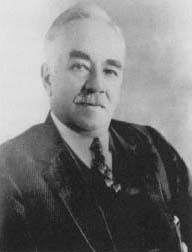Milton S. Hershey facts for kids
Quick facts for kids
Milton S. Hershey
|
|
|---|---|

Hershey in 1910
|
|
| Born | September 13, 1857 Derry Township, Pennsylvania, United States
|
| Died | October 13, 1945 (aged 88) Hershey, Pennsylvania, United States
|
| Resting place | The Hershey Memorial, Hershey Cemetery, Laudermich Road, Hershey, Pennsylvania, U.S. Section Spec-Her, Lot 1. |
| Nationality | American |
| Other names | The Chocolate King |
| Education | Started school at 6 years old and finished through fourth grade |
| Occupation | Confectioner, businessman, philanthropist |
| Known for | The Hershey Company-Founder, Hershey Bar, Hershey, Pennsylvania-founder/planner, Hershey Cemetery |
| Net worth | approx. $10 billion USD |
| Spouse(s) |
Catherine "Kitty" Elizabeth Sweeney
(m. 1898; died 1915) |
| Children | none |
Milton Snavely Hershey (September 13, 1857 – October 13, 1945) was an American confectioner, philanthropist, entrepreneur, and the founder of the Hershey's candy company.
Hershey was born on September 13, 1857 in Derry Township, Pennsylvania.
In 1887, Hershey created the Lancaster Caramel Company. He created many kinds of caramels. He began experimenting with chocolates at the Chicago World's Fair.
On March 2, 1903, he began construction on what was to become the world’s largest chocolate manufacturing company, only he didn't know that it would become a large company. In 1935, Hershey established the M.S. Hershey Foundation, a private charitable foundation that provides educational and cultural opportunities for Hershey residents.
Hershey supplied the U.S. armed forces with chocolate bars during World War II. These bars were called Ration D Bars and Tropical Chocolate Bars.
Hershey was married to Catherine Sweeney from 1898 until her death in 1915. In 1912 Hershey was supposed to go on the RMS Titanic, but business concerns forced him to take an earlier ship from Europe to the United States. Sweeney died three years later.
Hershey died on October 13, 1945 from natural causes in Hershey, Pennsylvania, a town named after him, aged 88 years old.
Hershey started a school for orphaned children. He gave the Hershey Trust to that school. He made a town for his workers. Unlike other worker towns, it was comfortable and not expensive. Among many of the places he built for his workers to go to in their free time, Hershey built the Hershey Park, now a popular amusement park. Hershey was among the first to use the idea of Taylorism, after Frederick Winslow Taylor. Taylorism is the idea that workers who do more should earn more.
Contents
Lancaster Caramel Company
Hershey returned to Lancaster in 1883. He borrowed money from the bank to start the Lancaster Caramel Company, which quickly became an outstanding success. He used the caramel recipe he had obtained during his previous travels to make candies. Also, from his previous travels, he learned that caramels sell better in bulk, so that is what he did. This company soon became a success when a man from England visited Lancaster. He loved Hershey's candies once he tasted them and placed a big order to be delivered to Britain. Hershey was able to pay off the debt from the bank and had some money left over to buy more ingredients and equipment.
By the early 1890s Lancaster Caramel Company had gotten big, employing over 1,300 workers in two factories. After a travel to Chicago for the World's Columbian Exposition, he sparked an interest in chocolate. After a long time of deciding, he took a risk and sold Lancaster Caramel Company for one million dollars to start the famous Hershey Chocolate Company.
The Hershey Chocolate Company
Using the proceeds from the 1900 sale of the Lancaster Caramel Company, Hershey initially acquired farm land roughly 30 miles (50 km) northwest of Lancaster, near his birthplace of Derry Township. There, he could obtain the large supplies of fresh milk needed to perfect and produce fine milk chocolate. Excited by the potential of milk chocolate, which at that time was a luxury product, Hershey was determined to develop a formula for milk chocolate and market and sell it to the American public. Through trial and error, he created his own formula for milk chocolate. The first Hershey bar was produced in 1900. Hershey's Kisses were developed in 1907, and the Hershey's Bar with almonds was introduced in 1908.
On March 2, 1903, he began construction on what was to become the world’s largest chocolate manufacturing company. The facility, completed in 1905, was designed to manufacture chocolate using the latest mass production techniques. Hershey’s milk chocolate quickly became the first nationally marketed product of its kind.
The factory was in the center of a dairy farmland, but with Hershey’s support, houses, businesses, churches and a transportation infrastructure created around the plant. Because the land was surrounded by dairy farms, Hershey was able to use fresh milk to mass-produce quality milk chocolate. Hershey continued to experiment and perfect the process of making milk chocolate using the techniques he had first learned for adding milk to make caramels when he had moved to Drexel Hill.
Philanthropy
Since Hershey and his wife could not have children, they decided to help others, establishing the Hershey Industrial School with a Deed of Trust in 1909.
In 1918, Hershey transferred the majority of his assets, including control of the company, to the Milton Hershey School Trust fund, to benefit the Industrial School. The trust fund has a majority of voting shares in the Hershey Company, allowing it to keep control of the company. In 1951, the school was renamed the Milton Hershey School. The Milton Hershey School Trust also has 100% control of Hershey Entertainment and Resorts Company, which owns the Hotel Hershey and Hersheypark, among other properties. He took great pride in the growth of the school, the town, and his business. He placed the quality of his product and the well-being of his workers ahead of profits.
He was part of a forward-looking group of entrepreneurs who believed that providing better living conditions for their workers resulted in better workers…Milton Hershey conceived of building a community that would support and nurture his workers. Developing the community became a lifelong passion for him.
Hershey built Hershey Cemetery on Laudermilch Road in Hershey, Pennsylvania. On July 31, 1923, Hershey transferred the land into a cemetery for $1.00.
In 1935, Hershey established the M.S. Hershey Foundation, a private charitable foundation that provides educational and cultural opportunities for Hershey residents. The foundation supplies funding for three entities: the Hershey Museum and Hershey Gardens, the Hershey Theatre and the Hershey Community Archives.
The founding of the Penn State Milton S. Hershey Medical Center occurred in 1963 when the board of the trust went to the Dauphin County Orphans Court with the cy-près doctrine (cy près is a French phrase meaning "As close as possible"). It was a gift from the Milton Hershey School Trust to the people of Pennsylvania, with an initial endowment of $50 million and only one restriction—the hospital had to be built in Hershey. The hospital is a teaching hospital, with an annual budget exceeding the initial construction cost.
The Hershey Company has continued his philanthropic ways. The Hershey Company helped start up Elizabethtown College's honors program.
Close call of the Titanic
In 1912, the Hersheys were booked to travel on the ill-fated maiden voyage of the British luxury liner RMS Titanic. They canceled their reservations at the last minute due to business matters requiring Hershey's attention. The cancellation is often incorrectly attributed to Kitty Hershey falling ill, but by this time, she had been ill for several years. Instead, they booked passage to New York on the German luxury liner SS Amerika. The former Hershey Museum displayed a copy of the check Milton Hershey wrote to the White Star Line as a deposit for a first-class stateroom on the Titanic. This copy is now located in the archives of the Hershey Story Museum, which replaced the original Hershey Museum in 2009.
World War II
Hershey Chocolate supplied the U.S. Armed Forces with chocolate bars during World War II. These bars were called Ration D Bars and Tropical Chocolate Bars. The Ration D Bar had very specific requirements from the army: It had to weigh 1 or 2 ounces (28 or 57 g); it had to resist melting at temperatures higher than 90 degrees, and it had to have an unpleasant-enough flavor to prevent the troops from developing cravings for them. After a year or two, the Army was impressed enough with the durability and success of the Ration D Bar to commission Hershey to make the Tropical Chocolate Bar. The only difference between them was that the Tropical Chocolate Bar was made to taste better than the Ration D Bar and still be as durable. Tropical Chocolate Bars were designed not to melt in the tropical weather. It is estimated that between 1940 and 1945, over three billion of the Ration D and Tropical Chocolate Bars were produced and distributed to soldiers throughout the world. In 1939, the Hershey plant was capable of producing 100,000 ration bars a day. By the end of World War II, the entire Hershey plant was producing ration bars at a rate of 24 million a week. For its service throughout World War II, the Hershey Chocolate Company was issued five Army-Navy 'E' Production Awards for exceeding expectations for quality and quantity in the production of the Ration D and Tropical Chocolate Bars. The Hershey factory machine shop even made some parts for tanks and machines during the war.
Personal life
On May 25, 1898, Hershey married Catherine Elizabeth "Kitty" Sweeney (b. 1872), an Irish-American Catholic from Jamestown, New York. Hershey and his wife Catherine did not have any children.
On March 25, 1915, Hershey's wife Catherine died of an unknown disease. In 1919, Hershey moved his wife Catherine's body from Philadelphia to Hershey Cemetery. In March 1920, Hershey's mother Fanny Hershey died and she was buried in Hershey Cemetery. In late 1930, his father's body was moved there.
Death
Hershey died of pneumonia in Hershey Hospital on October 13, 1945, at the age of 88. Hershey is buried at Hershey Cemetery, a cemetery which he built, on Laudermilch Rd in Hershey, Pennsylvania. Hershey's grave is located at Section Spec-Her, Lot 1, Grave 1, next to his wife (Grave 2).
Legacy
At the Hershey School, there is a bronze statue of Milton Hershey with an orphan boy wrapped in his arms. Below the statue are these words: "His deeds are his monument. His life is our inspiration."
September 13 is International Chocolate Day, which is also Hershey's birthday.
On September 13, 1995, the United States Postal Service issued a 32-cent stamp for Milton S. Hershey, which honors him as a philanthropist, as part of the Great Americans series. The stamp was designed by Dennis Lyall, an artist from Norwalk, Connecticut.
Milton S. Hershey quotes
- "My best advice to you is - when you tackle a job stick to it until you have mastered it."
- "I’ll stake everything on chocolate."
- "If I rest, I’ll rust."
See also
 In Spanish: Milton Snavely Hershey para niños
In Spanish: Milton Snavely Hershey para niños



